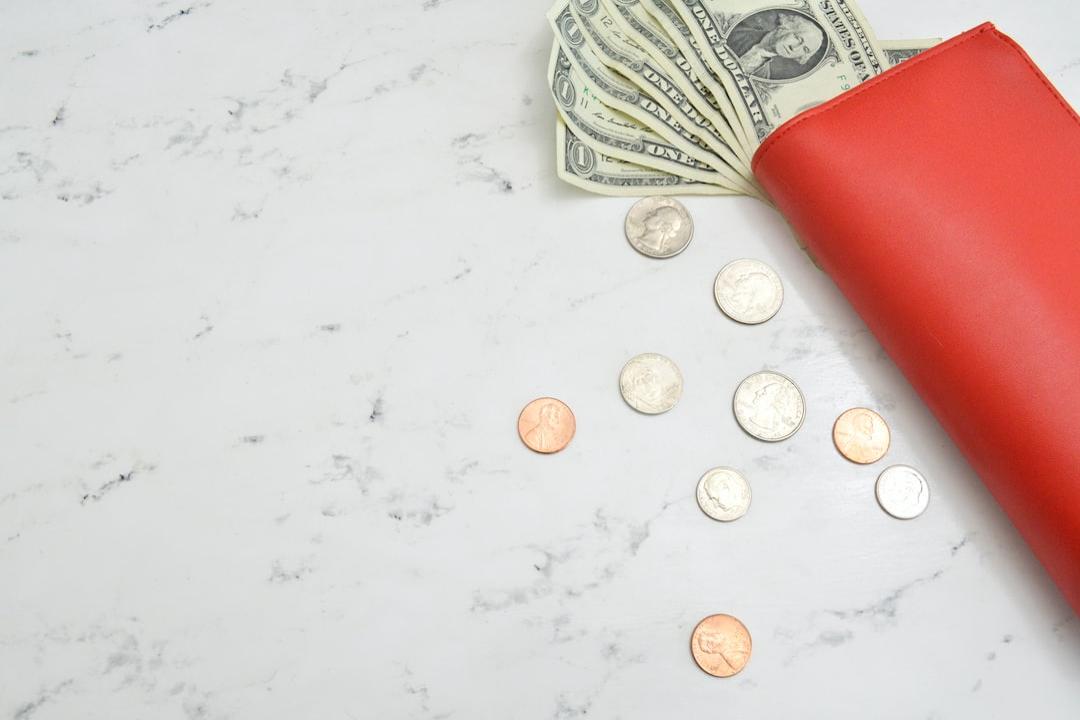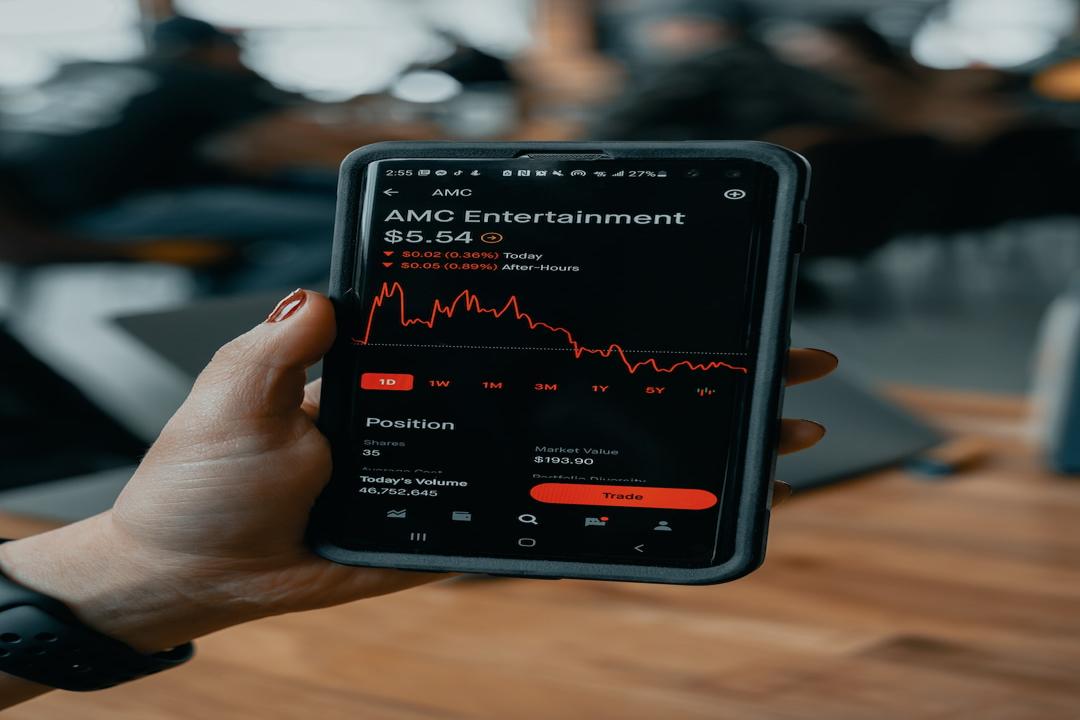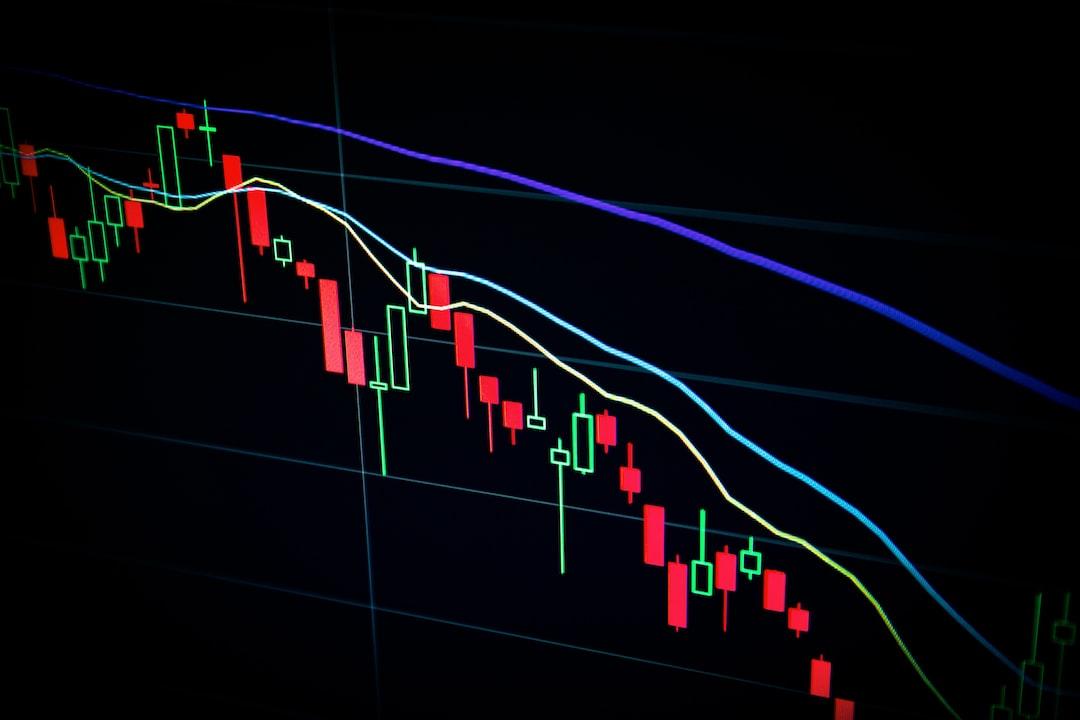Author: BitMEX founder Arthur Hayes
Translator: DeepTechFlow
Some people will say:
“The cryptocurrency bull market has ended.”
“I need to launch my token now because we are in the downward phase of the bull market.”
“Why didn’t Bitcoin rise with the large U.S. technology companies in the Nasdaq 100 Index?”

This comparison chart of the Nasdaq 100 Index (white) and Bitcoin (gold) shows that the trends of the two assets are the same, but Bitcoin has stalled after reaching a historic high earlier this year.
But the same people will also say the following:
“The world is transitioning from a unipolar world order dominated by the United States to a multipolar world order that includes leaders such as China, Brazil, and Russia.”
“To fund government deficits, depositors must be subject to financial repression, and central banks must print more money.”
“The Third World War has already begun, and war leads to inflation.”
Some opinions on the current Bitcoin bull market phase and their views on geopolitics and the global currency situation confirm my view that we are at a turning point – we are transitioning from one geopolitical and monetary global arrangement to another. Although I don’t know which country will ultimately dominate, or what the specific trade and financial structures will look like, I can visualize the general outline.
I want to move away from the rapidly changing capital markets of the current cryptocurrency and focus on the broader cyclical trend we are in.
I want to analyze the three major cycles from the Great Depression of the 1930s to the present. This will focus on the United States, as the entire global economy is a derivative of imperial financial policy. Unlike Russia in 1917 and China in 1949, the United States did not undergo a political revolution due to the two World Wars. Most importantly, for this analysis, the United States is relatively the most suitable place to hold capital. It has the deepest stock and bond markets, and the largest consumer market. Whatever the United States does, other countries in the world will imitate and react, leading to results that are relatively good or bad compared to the flag on your passport. Therefore, understanding and predicting the next major cycle is very important.
There are two periods in history: local periods and global periods. In local periods, the government imposes financial repression on savers to fund past and current wars. In global periods, financial regulations are relaxed, and global trade is promoted. The local period is a period of inflation, while the global period is a period of deflation. Any macro theorist you are concerned with will have a similar classification to describe the main periods of history since the 20th century.
The purpose of this history lesson is to make wise investments throughout the entire cycle. In a typical 80-year life expectancy, due to the stem cells I injected, I would prefer to have more time; you can expect to experience an average of two major cycles. I categorize our investment choices into three categories:
If you believe in this system but not the people managing this system, you invest in stocks.
If you believe in this system and the people managing this system, you invest in government bonds.
If you don’t believe in this system or the people managing this system, then you invest in gold or other assets that do not require any residual existence of a country, such as Bitcoin. Stocks are a legal fiction maintained by courts that can deploy armed personnel to enforce. Therefore, stocks require a strong country to exist and maintain value in the long run.
In a local inflation period, I should own gold and abandon stocks and bonds.
In a global deflation period, I should hold stocks and abandon gold and bonds.
Government bonds generally do not hold value in the long run, unless I can use them at low or no cost indefinitely, or regulatory agencies force me to hold them. This is mainly because politicians find it too tempting to fund their political goals through money printing instead of resorting to unpopular direct taxation.
Before describing the cycles of the last century, I would like to describe a few key dates.
On April 5, 1933, U.S. President Franklin Roosevelt signed an executive order prohibiting private ownership of gold. He then devalued the price of the U.S. dollar against gold from $20 to $35, violating the U.S. commitment under the gold standard.
On December 31, 1974, U.S. President Gerald Ford restored the right of Americans to own gold privately.
In October 1979, Federal Reserve Chairman Paul Volcker changed U.S. monetary policy to target credit volume rather than the level of interest rates. He then restrained inflation by limiting credit. In the third quarter of 1981, the yield on 10-year U.S. government bonds reached 15%, a historic high, while bond prices reached historic lows.
On January 20, 1980, Ronald Reagan was sworn in as U.S. President. He then actively relaxed financial regulations. Some of his other notable subsequent financial regulatory changes included making capital gains tax treatment of stock options more favorable and repealing the Glass-Steagall Act.
On November 25, 2008, the Federal Reserve began printing money under its quantitative easing (QE) program to address the global financial crisis caused by subprime mortgage losses on financial institutions’ balance sheets.
On January 3, 2009, Satoshi Nakamoto released the Bitcoin blockchain’s genesis block. I believe our Lord and Savior is here, rescuing humanity from the control of the state by creating a digital cryptocurrency that can compete with digital fiat currencies.
1933-1980: American peace ascension period
Compared to other countries around the world, the United States emerged unscathed from the war. Considering the human casualties and property losses in the United States, the mortality and material destruction of World War II were lower than that of the Civil War in the 19th century. As Europe and Asia became devastated, the U.S. industry rebuilt the world and received huge returns.
Although the war progressed smoothly for the United States, it still needed to pay the price of the war through financial repression. Starting in 1933, the United States banned gold ownership. By the late 1940s, the Federal Reserve merged with the U.S. Treasury. This allowed the government to control the yield curve, enabling the government to borrow at rates below the market because the Federal Reserve printed money to buy bonds. To ensure savers could not escape, deposit rates were capped. The government used saved marginal dollars to fund World War II and the Cold War with the Soviet Union.
If gold and fixed income securities that pay interest at least at the inflation rate were banned, what else could savers do to beat inflation? The stock market was the only way out.

From April 1, 1933, to December 30, 1974, the S&P 500 Index (white) and the gold (gold) index (100) comparison
Even after President Nixon abolished the gold standard in 1971, gold rose, but its returns still did not exceed stocks.
However, what happened when capital could again freely gamble against institutions and governments?

From December 31, 1974, to October 1, 1979, the S&P 500 Index (white) and the gold (gold) index (100) comparison
During this time, gold outperformed stocks. I stopped comparing in October 1979 because Volcker announced that the Federal Reserve would significantly tighten credit, restoring confidence in the U.S. dollar.
1980-2008: The peak of the American Reign of the Global Cycle
With increasing confidence that the United States could and would defeat the Soviet Union, there was a change in political winds. It was time to transition from a wartime economy and remove financial and other regulations to get the market moving.
Under the new oil-dollar currency framework, the dollar was supported by sales of oil profits from Middle Eastern oil-producing countries such as Saudi Arabia. To maintain the purchasing power of the dollar, it was necessary to raise interest rates to suppress economic activity, thereby suppressing inflation. This is what Volcker did, raising rates, and the economy declined.
The early 1980s marked the beginning of the next cycle, where the United States, as the only superpower, spread its wings with world trade and the dollar strengthened due to monetary conservatism. As expected, gold performed poorly compared to stocks.

From October 1, 1979, to November 25, 2008, the S&P 500 Index (white) and the gold (gold) index (100) comparison
Apart from bombing some Middle Eastern countries back to the Stone Age, the United States has not faced any war with equivalent or similar-level armies. Even after wasting over $10 trillion, the United States faced insurgents in Afghanistan, cavemen in Syria, and was defeated in Iraq, and people’s confidence in the system and government did not waver. After Jesus seized glory with a broadsword a millennium ago, truthThe main will cause serious damage to the United States again this time.
Since 2008, the contrast between the United States and the Middle Ages cycle
Faced with another economic collapse of tight money, the American Association of the Great has defaulted and devalued again. This time, the Federal Reserve did not prohibit private ownership of gold, and then devalued the US dollar relative to gold, but decided to print money and buy government bonds, and it was called quantitative easing. In both cases, the credit based on the dollar expanded rapidly to “save” the economy.
The proxy war between major political groups has broken out again. An important turning point was the Russian invasion of Georgia in 2008, which was a response to NATO’s intention to join the organization. For the Russian elite led by President Putin, stopping the NATO with nuclear weapons from advancing and surrounding Russia’s homeland past and present is a top priority.
Currently, a fierce proxy war has erupted between the West (the United States and its vassals) and the Eurasian continent (Russia, China, Iran) in Ukraine and the Levant (Israel, Jordan, Syria, and Lebanon). Either conflict could escalate into a nuclear war between the two sides. In response to what seems to be an unstoppable war process, countries are turning inward to ensure that all aspects of their national economies are prepared to support the war.
As far as this analysis is concerned, this means that savers will be asked to provide funds for the country’s wartime spending. They will be suppressed economically. The banking system will allocate most of the credit according to the country’s instructions to achieve certain political goals.
The American Association of the Great has defaulted on the US dollar again to prevent a deflationary depression similar to the 1930s. Subsequently, the United States has set up trade protectionism barriers as it did from 1930 to 1940. All nation-states are looking after their own interests, which can only mean experiencing severe financial repression while also enduring severe currency inflation.
From November 25, 2008, to the present, the S&P 500 Index (white) compared to gold (gold) compared to Bitcoin (green) is 100
This time, with the devaluation of the US dollar by the Federal Reserve, capital can freely leave the system. The problem is, with the current local cycle beginning, Bitcoin provides another stateless currency. The main difference between Bitcoin and gold is that, in the words of Lynn Alden, Bitcoin’s ledger is maintained through encrypted blockchains, and the currency flows at the speed of light. In contrast, the ledger for gold is maintained by nature, and its movement speed is only comparable to the actual transfer of gold by humans. Compared to fiat currency, which moves at the speed of light and can be printed unlimitedly by governments, Bitcoin is superior, while gold is inferior. This is why Bitcoin has to some extent stolen the limelight from gold since 2009.
Bitcoin’s performance has far surpassed that of gold, to the point where you can’t see the difference in returns between gold and stocks from this chart. Therefore, gold’s performance has lagged behind stocks by nearly 300%.
The end of quantitative easing
While I think my background and description of the past 100 years of financial history is unbelievable, this does not eliminate people’s concerns about the end of the current bull market. We know that we are in a period of inflation, and Bitcoin has done what it should: outperformed stocks and depreciated fiat currency. However, timing is everything. If you bought Bitcoin at recent historic highs, you may feel like a beta version of a cuckold, because you are extrapolating past results to an uncertain future. That being said, if we believe that inflation will continue, and war (whether it’s a Cold War, a hot war, or a proxy war) is on the horizon, what insights does the past offer for the future?
National governments have always suppressed domestic savers to fund wars and winners of past cycles, and to maintain system stability. In this modern nation-state and large integrated commercial banking system, the primary way the government provides funds to itself and key industries is by controlling how banks allocate credit.
The problem with quantitative easing policies is that the market will put free money and credit into businesses that do not produce the actual products needed for a wartime economy. The American Association of the Great is the best example of this phenomenon. Volcker ushered in an era of omnipotent central banks. Central bankers create bank reserves by buying bonds to lower costs and increase credit limits.
In the private capital market, credit is allocated to maximize shareholder returns. The simplest way to raise stock prices is to reduce float through buybacks. Companies that can get cheap credit will borrow money to buy back stock. They will not borrow money to increase capacity or improve technology. Improving business to hope for more income is challenging and not guaranteed to boost stock prices. But mathematically, reducing float increases stock prices. Since 2008, large-cap companies that have obtained a lot of cheap credit have done this.
Another easy goal to achieve is to increase profit margins. Therefore, companies have not used stock prices to build new capacity or invest in better technology, but to reduce labor costs by moving jobs to China and other low-cost countries. U.S. manufacturing has become so fragile that it cannot produce enough ammunition to combat Russia in Ukraine. In addition, China has a significant advantage in manufacturing goods, to the point that the supply chain of the U.S. Department of Defense is filled with key components produced by Chinese companies. Most of these Chinese companies are state-owned enterprises. Quantitative easing (QE) combined with shareholder-centric capitalism has made the U.S. military “giant” dependent on the country’s “strategic competitor” (their words, not mine), China. This is ironic!
The way the American Association of the Great and the Western collective distribute credit will be similar to that of China, Japan, and South Korea. Either the state directly instructs banks to lend to this or that industry/company, or banks are forced to buy government bonds at a yield lower than the market, so the state can issue subsidies and tax breaks to the “right” businesses. In either case, the return on capital or savings will be lower than nominal growth and inflation. Assuming no capital controls are implemented, the only way out is to buy value storage outside the system, such as Bitcoin.
For those who are obsessed with observing the total credit created by non-financial banks and believe that the speed of credit growth is not enough to drive the price of cryptocurrencies up again, you must now be obsessed with observing the total credit created by commercial banks. Banks achieve this goal by lending to non-financial companies. Fiscal deficits also generate credit because deficits must be funded by borrowing in the sovereign debt market, and banks will dutifully buy this debt.
In short, in the past cycle, we monitored the size of the central bank’s balance sheet. In this round of cycles, we must monitor the fiscal deficit and the total amount of credit created by non-financial banks.
Trading strategy
Why am I confident that Bitcoin will regain its magic? Why am I confident that we are in a new localized, nation-first, inflationary cycle?
Look at this
information
:
According to a forecast by a federal agency, the U.S. budget deficit is expected to soar to $19.15 trillion in fiscal year 2024, exceeding last year’s $16.95 trillion, and reaching the highest level since the COVID-19 era, which the agency attributed to a 27% increase in spending from earlier forecasts.
For those worried that “Slow” Biden will not spend more to keep the economy running before the election, this is the answer.
The Atlanta Fed predicts that actual GDP growth in the third quarter of 2024 will be an astonishing +2.7%.
For those worried that the United States will fall into a recession, experiencing a recession is mathematically extremely difficult when the government spends $20 trillion beyond tax revenue. This is equivalent to 7.3% of GDP in 2023. For background, U.S. GDP fell by 0.1% in 2008 and by 2.5% during the global financial crisis in 2009. Even if there were another global financial crisis similar to the last one this year, the decline in private economic growth would still not exceed the amount of government spending. There will be no recession. This does not mean that a large number of ordinary people will not fall into serious financial difficulties, but the United States will continue to move forward.
I point this out because I believe that fiscal and monetary conditions are loose and will remain so, so holding cryptocurrency is the best way to preserve value. I am confident that today’s situation is similar to that of the 20th century, meaning that I should still be able to freely convert from fiat to cryptocurrency because the devaluation caused by the expansion and concentrated credit distribution through the banking system is coming.
Arthur Hayes Holding Cryptocurrency is the Optimal Approach to Preserve Value as the Global Economy Reaches an Inflationary Turning Point
Add A Comment

